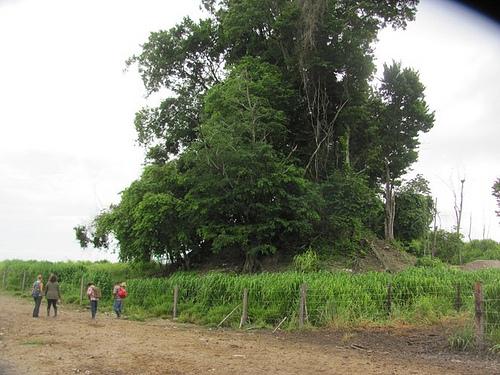
View of Tulix Mul from the south. Courtesy Maya Research Program
Source - http://popular-archaeology.com/issue/june-2013/article/archaeologists-discover-rare-ancient-mural-in-belize
Known as Tulix Mul, it appears at first blush as a mound-like island of jumbled trees and bushes jutting out of a landscape that has been otherwise cleared by local mechanized ranchers for their cattle ranch operations. It is a curious protrusion, but only because this site holds special value to archaeologists and other researchers. The local landowner ranchers have agreed to leave it untouched -- at least for now. Going forward, however, there are no guarantees.
Development must ultimately meet the needs of developers. In the meantime, investigators are racing against the clock and other elements to excavate, study, and preserve the site. It is an ancient Early Classic (200-600 CE) Maya site in northwestern Belize that contains evidence of at least two standing vaulted rooms.
As a relatively recent discovery, archaeologists, under the auspices of the Maya Research Program(MRP), and the University of Texas at Tyler, have been excavating at the site since 2012. It has been identified as a shrine group approximately 1 km. from Nojol Nah, another severely endangered Maya center where they have been excavating. In 2013, they focused on a structure (designated "Structure 2" on their site plan) that showed intrusion by a looter's trench. Excavation revealed evidence of a vaulted room.
"Our goal in 2013 was to strip the final phase of architecture from the eastern facade of this Early Classic structure in order to document its abandonment [in Late Classic times, or 600 - 900 CE] and to penetrate the centerline of the structure so its various phases of construction could be recorded," said Colleen Hanratty, a member of the Board of Directors of MRP and a leading, long-time researcher and field archaeologist with the organization. "In addition, a looter's trench on the western side of the structure was cleared out in order to document the architecture therein. While clearing out the looter's trench, it was revealed that the vaulted room was intact and had been filled in by the ancient Maya. We could see spots of intact plaster on the walls, which was very exciting. But we had to be patient. We continued to focus our energy on the eastern facade of the structure and soon discovered that it was actually an Early Classic roomblock that apparently had been filled in at the beginning of the Late Classic time period. We carefully removed the construction fill and were thrilled to discover additional plaster adhering to the room's western wall and bench."
Discovery of a plastered vaulted room was news enough. But by far the biggest prize was found beneath the plaster. Through time, small fragments had exfoliated from the plaster, revealing underlying evidence of a polychrome, fine-line mural. The mural style appeared generally similar to that found years before by other archaeologists at San Bartolo in Guatemala. Like San Bartolo, there are only a few other known Maya murals found in Central America. Aside from their artistic beauty, each has provided significant new information about Maya art, religious concepts, trade and interaction. The Tulix Mul mural may prove to be equally informative, especially as the site investigators suspect that "there is a real likelihood that the other room [still unexcavated] will also contain a mural."*
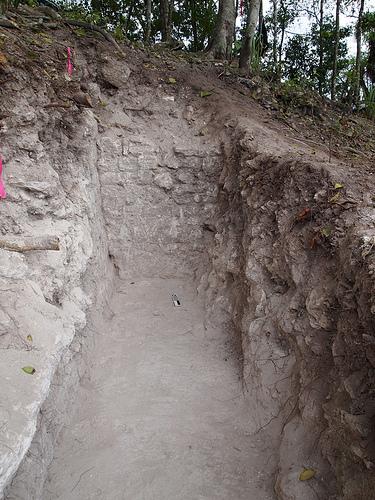
Above and below, exterior of Structure 2 emerges through painstaking excavation of its eastern side. Courtesy Maya Research Program.
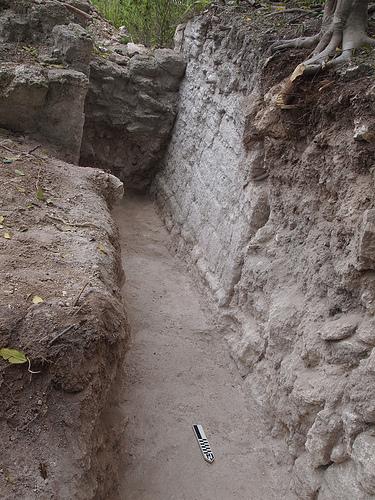
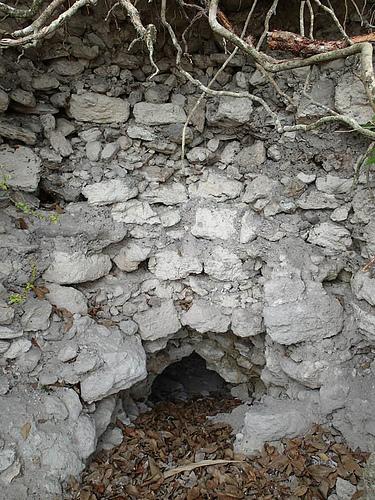
The looters trench on the western side. Courtesy Maya Research Program

The vaulted room as it appeared before the fill was removed. Courtesy Maya Research Program
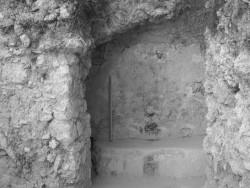
Above and below: View into the vaulted room, now excavated, containing the mural (currently still mostly plasted over by the ancients). Courtesy Maya Research Program

Part.2